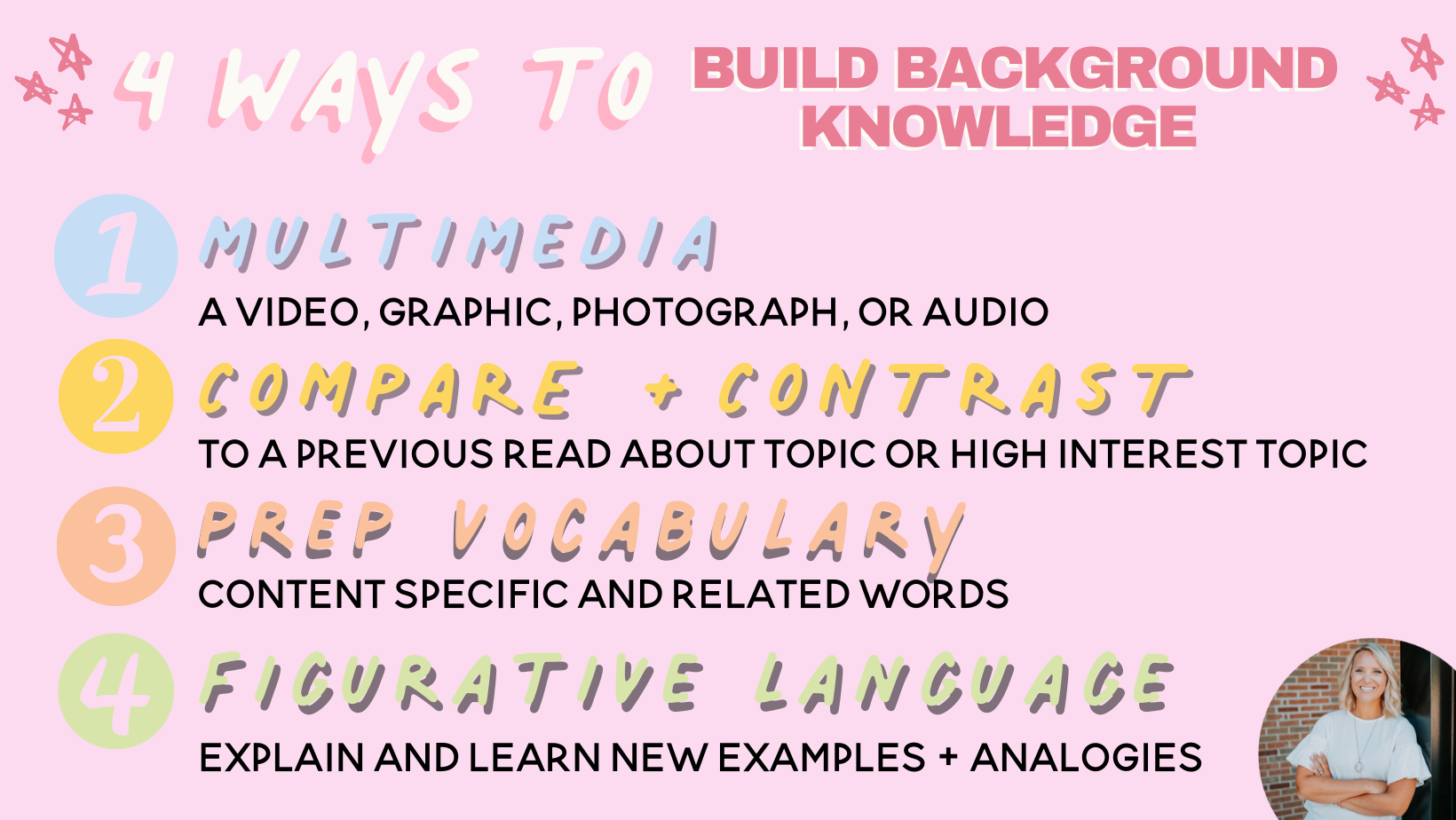The Effects of Building Background Knowledge Before Reading
When you think about the students in your classroom, I am sure you are acutely aware that they all come to you with different background knowledge. Their lived experiences and exposure to the world through various forms of media creates varying shapes of schema.
Have you ever thought about how this effects them as a reader? Most pieces of literature actually assume background knowledge. Well, that certainly doesn’t create a level playing field for students to access that text because their prior experiences aren’t equal. That doesn’t seem fair, does it? Take this research study done by Bransford and Johnson (1972),
“The procedure is actually quite simple. First you arrange things into different groups…Of course, one pile may be sufficient depending on how much there is to do. If you have to go somewhere else due to lack of facilities that is the next step, otherwise you are pretty well set. It is important not to overdo any particular endeavor. That is, it is better to do too few things at once than too many.”
Can you figure out what the above paragraph is talking about? It could be so many things, right? What if you are giving the title of the passage, “Washing Clothes”? With this simple piece of background knowledge, the pieces fall more into place, especially if you have had the prior experience of doing laundry.
While we can’t solve this problem for standardized testing (phew… that could be a whole long post!) We can solve it for our readers in our own classrooms. But as educators, this gives us the perfect opportunity.
It is our responsibility to build background knowledge prior to reading.
When you are planning your reading lessons, use this these suggestions to build background knowledge prior to reading:
Present students with a form of multimedia related to the text
Is there a video you can show that helps students visualize the topic? Is there a graphic or photograph of the event in the text?
Compare or contrast the topic to a familiar one
Can you think of a topic you’ve read about as a class that you can create a Venn diagram with prior to reading? Can you facilitate a discussion where students can share prior experiences and you help relate them to the new topic?
Prep students with content specific vocabulary
While you are pre-reading for the lesson, jot down any content-specific vocabulary words that students will need to understand to access the text. Do a word journey through those new words, and encourage students to use those words in comprehension activities after reading.
Use analogies or figurative language to expose students to the topic
If a book uses a phrase like “he knocked it out of the park”, second language learners will struggle to understand what the text is referring to. Build background knowledge by talking through figurative language within the text, or making analogies to familiar topics
Save the image below for a future quick reference!
If we don’t make an effort to enhance background knowledge, differences in children's knowledge base may further the differences in children's vocabulary and comprehension. Students who are given information and opportunity to activate schema prior to reading are better able to understand than those who are not. Background knowledge plays a great role in how efficiently individuals read.
The best part? We, as educators, get to be the solution to this problem! I wanted to give you a chance to get started right away in your classroom! I created this quick + free Valentine’s Day lesson to apply the research on building background knowledge for our readers. You can use this with the book Robot in Love.
You can grab this free resource here!
Happy reading!
<3 Amelia

